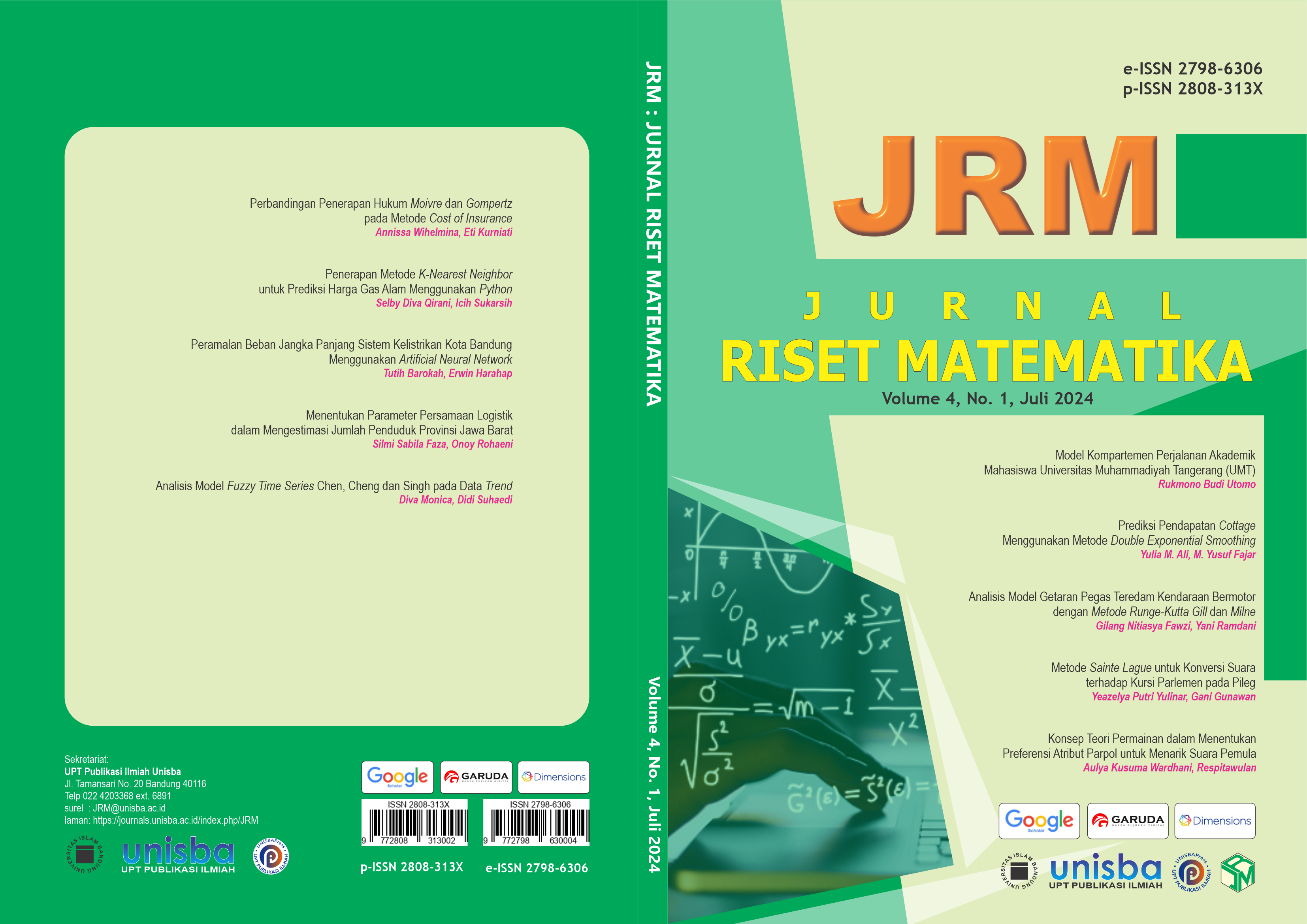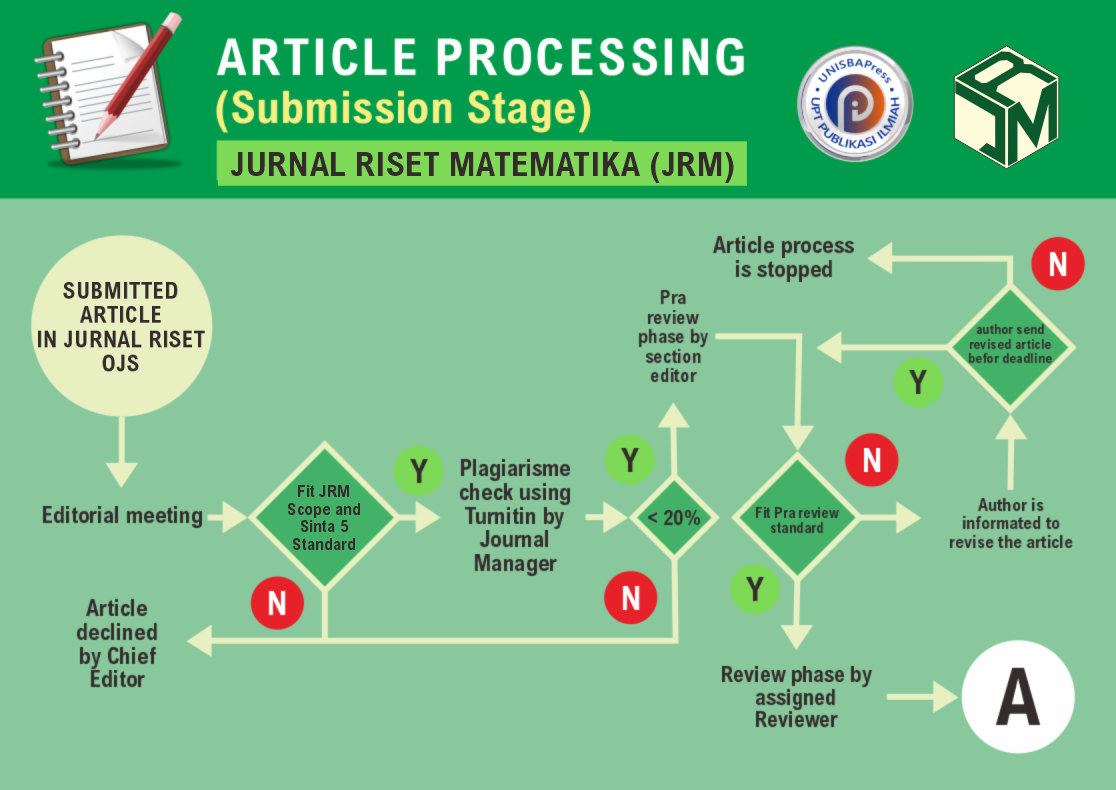Analisis Model Getaran Pegas Teredam Kendaraan Bermotor dengan Metode Runge-Kutta Gill dan Milne
DOI:
https://doi.org/10.29313/jrm.v4i1.3598Keywords:
Getaran Pegas Teredam, Analitik, Metode Runge Kutta GillAbstract
Abstrak. Persamaan model getaran pada pegas teredam merupakan persamaan diferensial biasa (PDB) yang dapat diselesaikan menggunakan metode analitik dan metode numerik. Tujuan skripsi ini adalah menentukan penyelesaian numerik dari persamaan getaran pegas teredam pada kendaraan bermotor dengan menggunakan metode Runge-Kutta Gill dan metode Milne dengan perhitungan secara analitik sebagai pembanding. Hasil pengolahan data menunjukkan bahwa (1) Penyelesaian secara analitik, pegas berosilasi dan mencapai titik setimbang pada waktu t = 4 dengan regangan maksimum tercapai pada nilai 4,62 yang kemudian mengecil seiring waktu. (2) Penyelesaian secara numerik dari persamaan getaran pegas teredam pada kendaraan bermotor dengan menggunakan metode Runge-Kutta Gill tampak berosilasi dan mencapai titik setimbang t = 4 dengan regang maksimal pada nilai 4 untuk posisi x terhadap waktu, 13,5692 untuk kecepatan terhadap waktu dan galat paling besar yaitu 0,6200. (3) Penyelesaian secara numerik dari persamaan getaran pegas teredam pada kendaraan bermotor dengan menggunakan metode Milne tampak pegas setimbang pada t = 2 dengan regang maksimal pada nilai 4,0163 untuk posisi x terhadap waktu, 11,8406 untuk kecepatan terhadap waktu dan galat paling besar yaitu 0.6202.
Abstract. The vibration model equation in a damped spring is an ordinary differential equation (PDB) which can be solved using analytical methods and numerical methods. The aim of this thesis is to determine the numerical solution of the damped spring vibration equation in motorized vehicles using the Runge-Kutta Gill method and the Milne method with analytical calculations as a comparison. The results of data processing show that (1) Analytically resolved, the spring oscillates and reaches the equilibrium point at time t = 4 with the maximum strain reached at a value of 4.62 which then decreases over time. (2) Numerical solution of the damped spring vibration equation in a motor vehicle using the Runge-Kutta method. Gill appears to oscillate and reach the equilibrium point t = 4 with a maximum strain at a value of 4 for position x versus time, 13.5692 for velocity versus time and The largest error is 0.6200. (3) Numerical solution of the damped spring vibration equation in motor vehicles using the Milne method shows that the spring is in balance at t = 2 with a maximum strain of 4.0163 for position x versus time, 11.8406 for velocity versus time and the largest error namely 0.6202.
References
D. Giancoli, R. Resnick, and J. Walker, Fisika Dasar. Jakarta: Erlangga, 2005.
S. Winatapura, Strategi Belajar Mengajar Matematika. Jakarta: Universitas Terbuka Depdikbud, 1993.
D. Young and R. Freedman, Fisika Universitas Jilid I. Jakarta: Erlangga, 1996.
Serway and Jewett, Physics for Scientist and Engineers, 6th ed. Pomona: Thomson Brooks/Cole, 2004.
P. Tipler, Fisika Untuk Sains Dan Teknik. Jakarta: Erlangga, 1991.
E. Kreyszig, Matematika Teknik Lanjutan. Jakarta: Erlangga, 1993.
M. Yokoyama and M. Yamagishi, “Development of Steering Control System for Motorcycles,” International Federation of Automatic Control, vol. 55, no. 27, pp. 448–453, 2022.
R. Munir, Metode Numerik. Bandung: Informatika, 2008.
A. Tjolleng, Pengantar Pemrograman Matlab. Jakarta: PT Elex Media Komputindo, 2017.
Suhandoko, Analisis Getaran Pada Sistem Suspensi Kendaraan Roda Dua (Yamaha Jupiter Z 2004) Menggunakan Simulasi Software Matlab 6.5. Surakarta: Universitas Muhammadiyah Surakarta, 2014.













